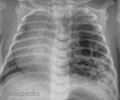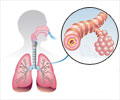Experts from the UK have shown in a new research that people who cycle through London and other major cities have higher levels of black carbon in their airway cells.

The combustion of fossil fuels results in the generation of large numbers of inhalable particles of soot (black carbon). There is increasing evidence that inhalation of black carbon particles is associated with a wide range of health effects - including heart attacks and reduced lung function.
The researchers, led by Professor Jonathan Grigg from Barts and the London School of Medicine, aimed to identify whether the way healthy adults commute to work affects their exposure to black carbon. Specifically, they tested the hypothesis that cyclists have higher personal exposure to black carbon.
To test this theory the study compared the lung dose of black carbon in cyclists and pedestrians. To measure lung dose the researchers sampled a lower airway cell called the airway macrophage - a specialised cell that sits on the airway surface and ingests foreign material.
The researchers collected sputum samples from five adults who regularly cycled to work in London and five pedestrians and analysed the amount of black carbon found in their airway macrophages. All participants in the study were non-smoking healthy urban commuters aged between 18 and 40 yrs.
The results showed that in this small sample, cyclists have 2.3-times more black carbon in their lungs when compared with pedestrians. The probability that this difference occurred by chance is less than 1 in 100.
Advertisement
Advertisement












